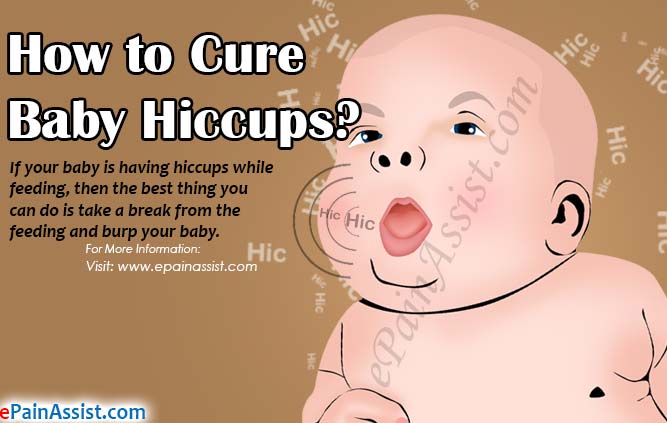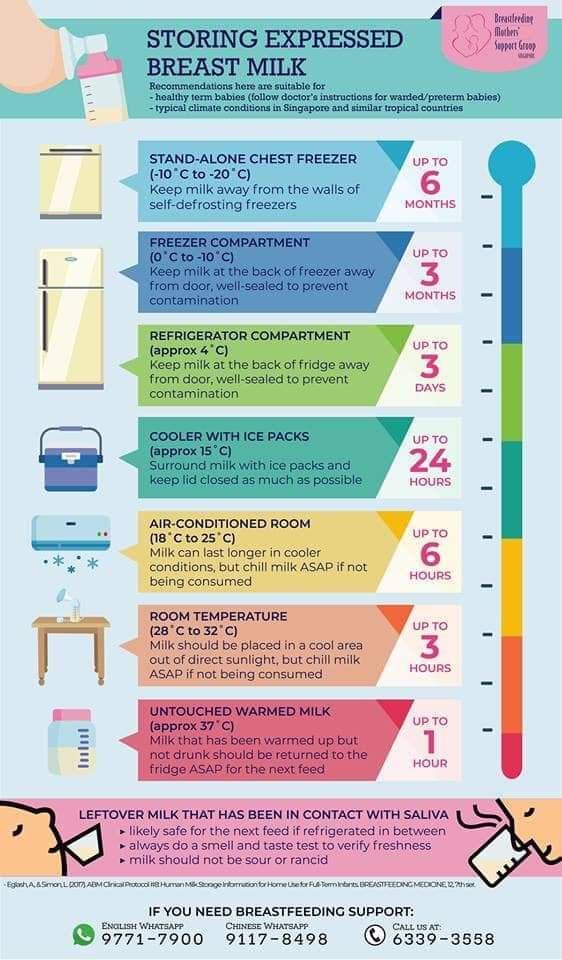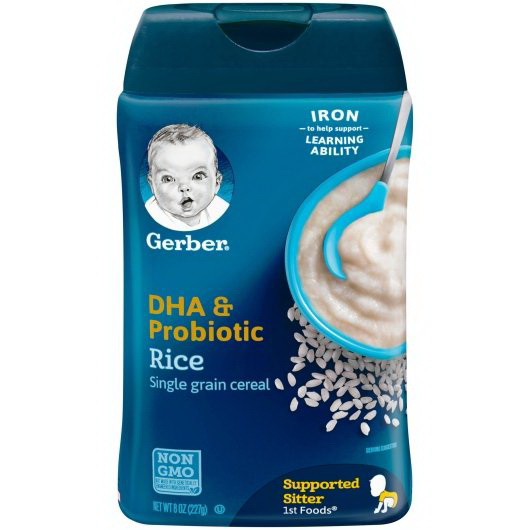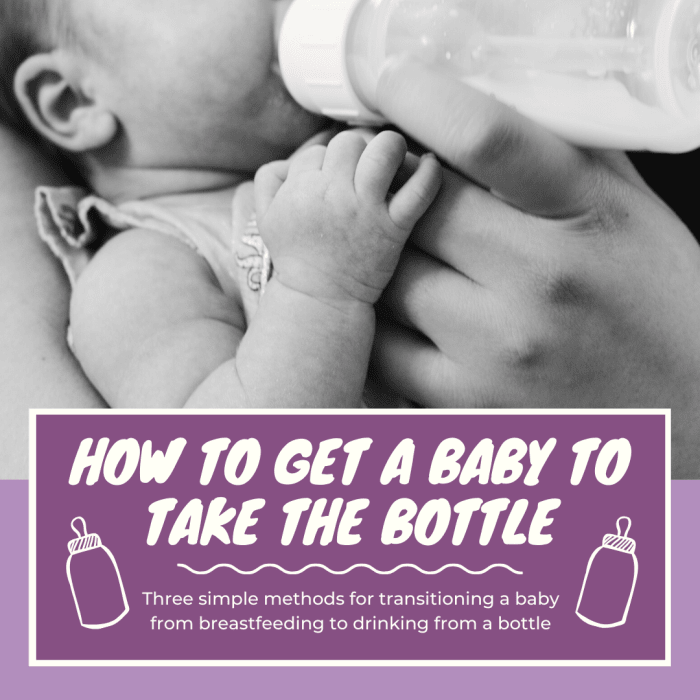Baby's eyes roll back when feeding
Is It Normal for a Newborn's Eyes to Roll Back in Their Head?
- The vision of newborns continues to develop in their first weeks of life and you may notice different kinds of eye movements, including rolling eyes.
- It is common for newborns to roll their eyes back when they are sleepy or about to fall asleep.
- Sometimes rolling eyes and other eye movement can be symptoms of eye problems or warning signs of seizure, so parents need to pay attention to their newborn’s eyes.
There are so many things to learn about newborns. You count dirty diapers and write down feeding times to make sure they’re getting enough milk. You look up techniques for swaddling so they can sleep. You run for your phone to search online for the term, “Is it normal for ______,” and then fill in the blank with any number of things your baby is or isn’t doing.
One of those things might be your newborn’s rolling eyes. As infant vision develops, their eye movement changes. If your newborn’s eyes roll back in their head how do you know if it’s something to worry about or just one of those things that babies do?
It may help to learn about newborn vision so you can tell the difference between completely normal baby rolling eyes that are part of sleep and eye rolls that are noticeable symptoms of a health condition.
Eye-Rolling in Newborns: What Does It Mean?Newborn vision is still developing in the first few weeks. According to the American Academy of Ophthalmology, newborns are sensitive to bright light. Although they can see across a room, they prefer to focus on objects and faces that are close to them.
Babies at this early stage are attracted by large shapes and they can see patterns in a range of light and dark. Within the first month, they start to detect colors.
In their first two months, your newborn’s eye movement may seem a little haphazard. That’s because the human eye is complex, and infant eyes are just not well coordinated yet.
Newborn eyes may move in different directions, wander to the sides, or appear to cross. This type of eye movement is normal for most babies and usually self-corrects.
Around three months, as eye muscles strengthen and your baby gets better at focusing, they should be able to track objects as they move.
These early months are when babies are attracted to black and white images and stimulated by monochrome toys and books.
Normal Causes of Eye-Rolling in NewbornsUntil about six months, your baby may roll eyes or have unusual eye movement because their eyes are still maturing. It takes time for their eyes to fully mature and work together to focus, track, and recognize familiar objects and people.
When they are awake you may see your baby’s eyes roll back under heavy eyelids as they are waking up or as they are falling asleep. These are normal eye movements in conjunction with yawning and stretching as a sign your baby wants to sleep.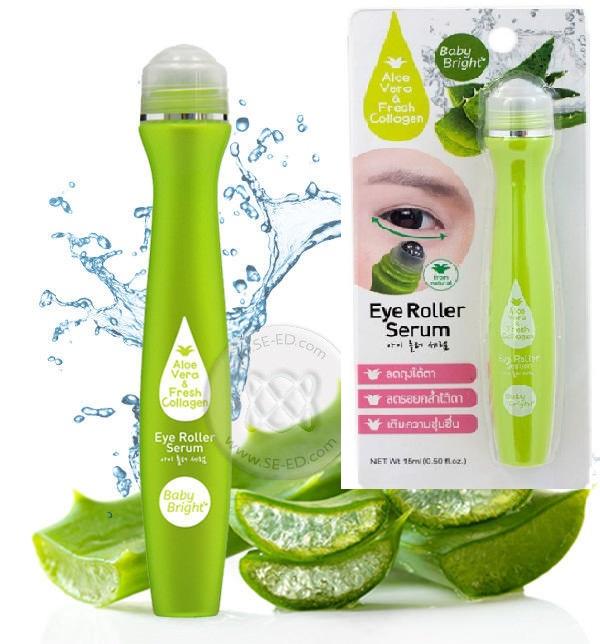
Babies spend much of their sleep in what is called active sleep where they may groan, cry, breathe loudly, or roll their eyes. When your baby is in the rapid eye movement (REM) stage of deep sleep, you might be able to see their eyes rolling under their eyelids. This is completely normal and something that all of us do when sleeping.
Medical Conditions Often Associated With Abnormal Eye-RollingEye rolling while awake that is not associated with sleep can be an indicator of some medical conditions. If you notice your baby roll their eyes a lot while awake or you see other eye movements that worry you, you should see your pediatrician.
The following conditions often have abnormal eye-rolling as a symptom:
NystagmusNystagmus is a condition often detected in early infancy. Excessive eye rolling may be an indicator of nystagmus. The eyes move involuntarily in a repetitive side to side, up and down, or in a circular motion.
The condition can be inherited or acquired in later life as the result of another medical problem, like a stroke. Nystagmus results in some visual loss, difficulty with coordination, and difficulty with reading print. Nystagmus may also be a symptom of other retinal disorders, like Leber’s Congenital Amaurosis (LCA).
Glasses and surgery are not very effective in treating nystagmus. Children with nystagmus will need support and low vision adaptive measures, like good lighting and large print materials in the classroom, but they can lead active lives.
StrabismusWhen eyes don’t line up, move in different directions, or wander, these symptoms accompany strabismus, also known as “lazy eye.” The straighter eye becomes dominant and the weaker eye tends to move differently.
If after the age of six months, babies roll their eyes a lot or their eyes continue to move differently from one another, these may be signs of strabismus.
Strabismus can be corrected if found early. Most children are diagnosed between the age of one and four years old.
Most children are diagnosed between the age of one and four years old.
Strabismus is often associated with cerebral palsy. While not all children with cerebral palsy will have vision problems, they can be a part of the condition.
Cerebral palsy is diagnosed between 12 and 24 months. Other signs of the condition in babies include:
- Missing developmental milestones like sitting and rolling and holding up head
- Unusually floppy or unusually stiff arms, legs and neck
- Limbs cross over each other
- Favoring one side of the body over the other
- Pushing their body away from you when picked up
If you notice eye-rolling that concerns you or any of these other symptoms in your infant, you should consult with your pediatrician.
When Should Newborn Eye-Rolling Be a Cause of Concern?Other possible causes of eye-rolling that are not associated with sleeping include head injuries and different kinds of seizures. It is important for all parents to know the signs of a seizure and to talk to their doctor if they are ever concerned.
It is important for all parents to know the signs of a seizure and to talk to their doctor if they are ever concerned.
This kind of seizure is caused by a fever and can happen to any child. They are frightening to witness, but they are usually harmless and last only a few seconds.
Symptoms that accompany febrile seizures are:
- Eyes rolling back in the head
- A fever of 100.4 degrees F (38 degrees C)
- Limb stiffening and jerky body movements
- Loss of consciousness
Although they may be brief, your child should be seen by a doctor in the emergency room after having one of these seizures. It is especially important to seek medical care if the episode lasts longer than five minutes or if your child is vomiting, has irregular breathing, or has a stiff neck.
Other Types of SeizuresYour baby’s eye-rolling could be a sign of other kinds of seizures along with symptoms like excessive irritability and infantile spasms, which are also known as West Syndrome. Make sure to raise any concerns you have with your healthcare provider as soon as possible if you notice these symptoms.
Make sure to raise any concerns you have with your healthcare provider as soon as possible if you notice these symptoms.
The information WonderBaby provides is not intended to be, and does not constitute, medical or other health advice or diagnosis and should not be used as such. Always consult with a qualified medical professional about your specific circumstances.
Causes, Symptoms And When To See A Doctor
Most babies roll their eyes; knowing the precise cause can help avert undue worry.
Research-backed
MomJunction believes in providing reliable, research-backed information to you. As per our strong editorial policy requirements, we base our health articles on references (citations) taken from authority sites, international journals, and research studies. However, if you find any incongruencies, feel free to write to us.
Image: Shutterstock
Eye rolling is a common phenomenon that many people do involuntarily. However, when you see a baby rolling eyes, you may feel concerned about a possible health problem. Nevertheless, most babies and infants may roll their eyes on a normal basis without any underlying causes of concern.
However, when you see a baby rolling eyes, you may feel concerned about a possible health problem. Nevertheless, most babies and infants may roll their eyes on a normal basis without any underlying causes of concern.
However, you may seek medical care if your baby’s eye-rolling movements become too frequent and they begin to display any signs of neurological disorders.
Explore more about the possible causes, signs and symptoms, warning signs, and facts to remember about eye-rolling in babies.
Why Do Babies Roll Their Eyes While Sleeping?Image: Shutterstock
Babies may roll eyes since their eye muscles and the visual system are not yet completely developed. Eyesight and control over eye muscles gradually develop in babies over time (1). According to Daniel Boyer, MD, specialized in molecular biology, histology, pharmacology, and embryology, to name a few, “Babies roll their eyes because it is one of their natural reflexes. When babies stop rolling their eyes, it means that they have developed enough control over their muscles to keep their eyes focused in the same direction. This typically happens around six months.”
When babies stop rolling their eyes, it means that they have developed enough control over their muscles to keep their eyes focused in the same direction. This typically happens around six months.”
Related: When Can Babies See Clearly And Their Vision Development
Eye rolling tends to happen during the transitional time between sleep and wakefulness. You may often notice eye-rolling when your baby falls asleep or while breastfeeding. It can be slow, repeated opening and closing of the eyes. While breastfeeding does not cause eye-rolling in babies, most moms often observe their little ones close their eyes during nursing sessions.
Neurological disorders, head injuries, hypoglycemia (low blood sugar), fever, etc. may cause seizure-related eye-rolling in many babies. Younger babies may roll their eyes since they have poor eye muscle control and developing brain functions. Whereas, it could be more likely due to pathology in a ten-month-old baby who has developed reasonable control over the eye muscles.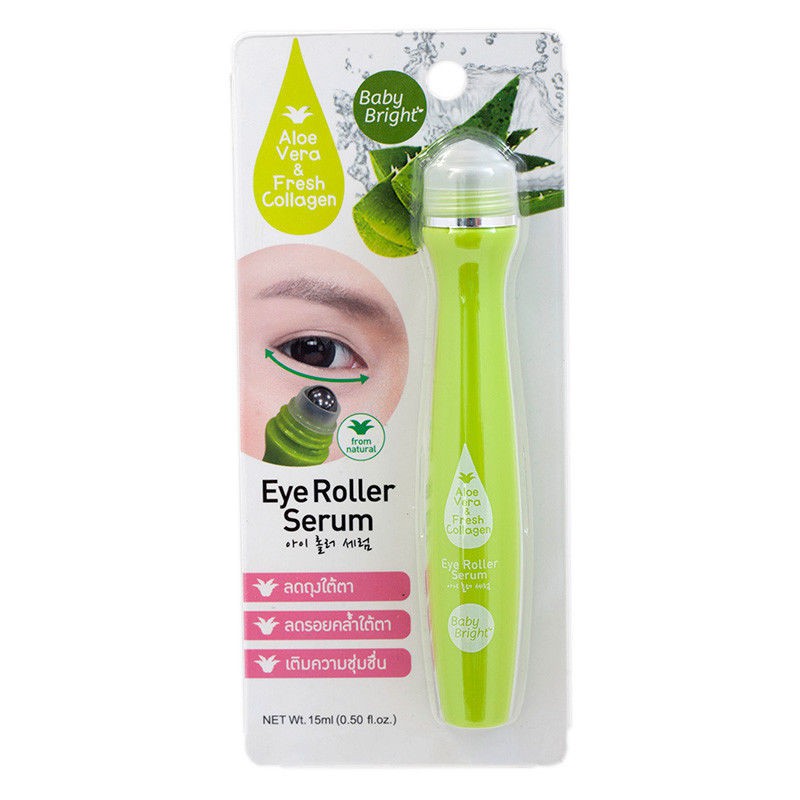
Eye rolling can be normal in many circumstances. There won’t be any signs of behavioral or physical changes in babies who have normal eye movements. But, pathological eye roll may also be associated with other symptoms depending on the brain’s affected area or the problem with the visual system. Po-Chang Hsu, MD, a medical content expert at SleepingOcean.com, says, “Eye-rolling could be a sign of disorders, such as nystagmus, strabismus, seizures, and cerebral palsy. However, parents should remember that eye-rolling doesn’t always mean an underlying issue. They should only be concerned if such eye movements are accompanied by symptoms, such as shivering, convulsions, uncontrolled crying, body jerkiness, trembling, increased irritability, irregular breathing, or any unusual changes in the baby’s behavior.”
So, if you notice your baby rolling eyes often, look for signs of neurological disorders such as infantile spasms (West syndrome).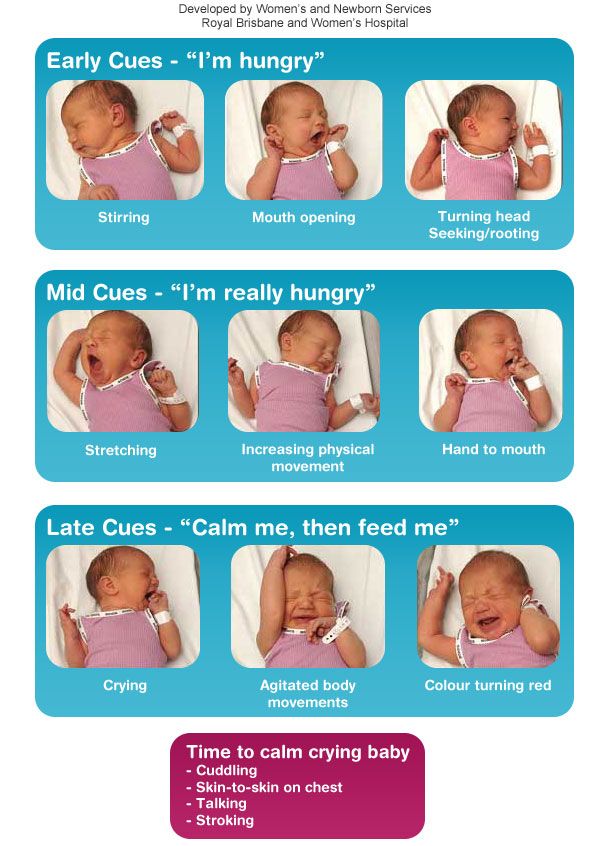 You may also look for any warning signs of serious illnesses that may cause eye-rolling in infants. These warning signs may include (2):
You may also look for any warning signs of serious illnesses that may cause eye-rolling in infants. These warning signs may include (2):
- Limb stiffening
- Shivering
- Irregular breathing
- Increased irritability
- Jerky body movements or convulsions
- Prolonged crying
Image: Shutterstock
These can be symptoms of seizure in babies, and they may often require special care to avoid head injuries or other traumas during the seizure. However, Dr. Boyer clarifies, “A seizure is a medical condition that occurs when there is a sudden, brief change in how your brain’s electrical signals work. These changes can affect your body and brain’s normal functions, causing symptoms that can be mild to severe.
Rolling your eyes may not be a sign of a seizure because there is no uniform interpretation of what eye-rolling may mean. However, eye-rolling seizures can involve a person’s eyeballs.”
Eye movements not seen as normal include eyes that look only to one side and seem to be ‘stuck’ that side or eyes jerking from side to side constantly and not just associated with falling asleep or feeding.
Related: 5 Different Types Of Baby Cries And Their Reasons
What To Do If A Baby Rolls Eyes?Frequent observation is required to determine whether eye-rolling is severe or not. You may keep a log of the number of times eye-rolling occurs and any associated symptoms. Daily records on the baby’s eye-rolling habit can be useful for diagnosis.
If possible take a recording of the event on your phone. It sometimes comes in handy when the healthcare provider is seeing the baby when the eye movements are not happening.
A seizure can be due to fever, infections, or epilepsy disorder in babies. Seek immediate medical care to diagnose the cause.
Related: Signs Of Bacterial Infections, Causes, Diagnosis, & Treatment
When To Consult A Doctor
Image: Shutterstock
Consult your baby’s pediatrician if you notice abnormal eye-rolling in your baby. If you are concerned or suspect infantile seizure, discuss with your doctor to diagnose the causes.
1. Why do babies move their eyes from side to side rapidly?
Babies may move their eyes side to side in the initial months after birth for diverse reasons. However, in rare scenarios, repetitive and rapid side-to-side or circular eye movements could be seen in babies with nystagmus, which may be congenital or acquired (3).
2. Do newborns have weird eye movements?
Yes, sometimes a newborn may display various eye movements, such as rolling or rotating their eyes. Moreover, in some cases, you may notice that your baby’s eyes may seem crossed or atypical during the first three months after birth (4). Though this could be normal, you may consult a doctor if you persistently suspect any abnormalities in your baby’s eye movements.
Eye rolling in babies may not always be serious. You may find them rolling their eyes when they are sleepy or breastfeeding. So, the behavior may be a transition phase between sleep and wakefulness. However, eye rolling might also be seizure-related. It may sometimes indicate head injuries, neurological disorders, or hypoglycemia. It may also indicate poor eye muscle control or still-developing brain functions. Irrespective of the cause, the condition should not be ignored. If they exhibit symptoms such as shivering, limb stiffening, or irritability, consult your doctor for treatment options.
It may sometimes indicate head injuries, neurological disorders, or hypoglycemia. It may also indicate poor eye muscle control or still-developing brain functions. Irrespective of the cause, the condition should not be ignored. If they exhibit symptoms such as shivering, limb stiffening, or irritability, consult your doctor for treatment options.
Key Pointers
- Underdeveloped eye muscle control or gradually falling asleep while breastfeeding can prompt babies to roll their eyes.
- It is a normal phenomenon, but additional symptoms such as body stiffening, abnormal breathing, or convulsions may indicate a neurological issue.
- Observe the pattern and alarming signs, if any, and consult your doctor for timely diagnosis and treatment.
References:
MomJunction's articles are written after analyzing the research works of expert authors and institutions. Our references consist of resources established by authorities in their respective fields.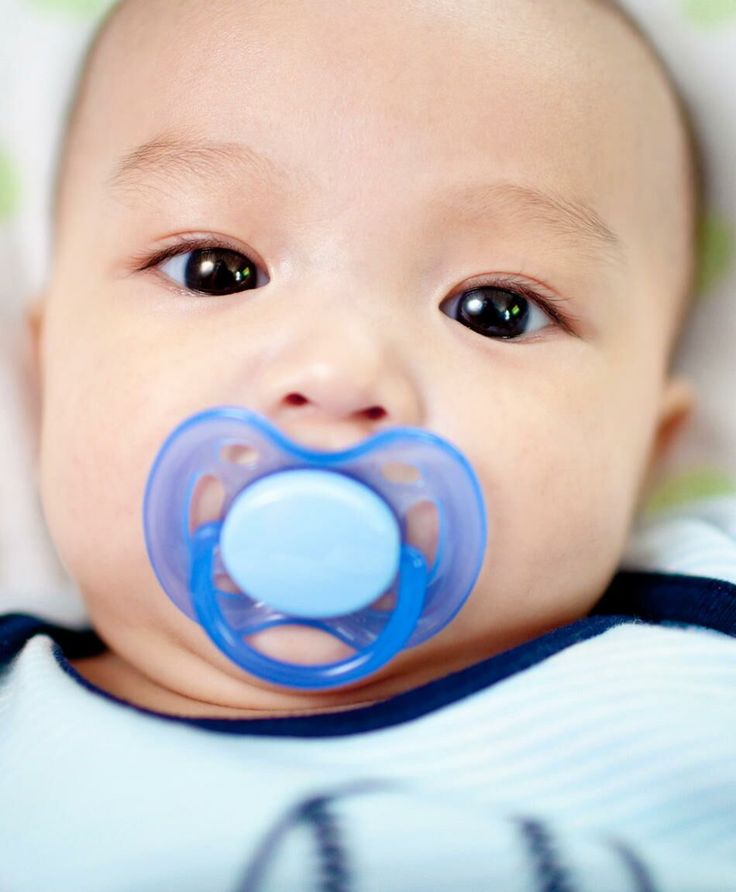 You can learn more about the authenticity of the information we present in our editorial policy.
You can learn more about the authenticity of the information we present in our editorial policy.
1. Infant Vision: Birth to 24 Months of Age; American Optometric Association
2. Infantile Spasms Symptoms and Diagnosis; The University of Pittsburgh Medical Center
3. Nystagmus; NHS Foundation Trust.
4. Looking at Your Newbornl: What’s Normal; Kids Health
The following two tabs change content below.
- Reviewer
- Author
Dr. Bisny T. Joseph is a Georgian Board-certified physician. She has completed her professional graduate degree as a medical doctor from Tbilisi State Medical University, Georgia. She has 3+ years of experience in various sectors of medical affairs as a physician, medical reviewer, medical writer, health coach, and Q&A expert. Her interest in digital medical education and patient education made...
View Profile ›
Dr. Wayne Hough is a pediatrician currently based in the Northern Suburbs of Cape Town in South Africa. He got his medical degree from the University of Stellenbosch. He then worked at the Tygerberg Children's Hospital before completing his pediatric training and qualification from the South African College of Medicine. Dr. Hough also holds a MMed degree in pediatrics from...
Wayne Hough is a pediatrician currently based in the Northern Suburbs of Cape Town in South Africa. He got his medical degree from the University of Stellenbosch. He then worked at the Tygerberg Children's Hospital before completing his pediatric training and qualification from the South African College of Medicine. Dr. Hough also holds a MMed degree in pediatrics from...
View Profile ›
Tea Tree Oil During Pregnancy: Safety,..
Tea Tree Oil During Pregnancy: Safety,..
Why Do Babies Fake Cough? Reasons And..
Why Do Babies Fake Cough? Reasons And..
Vaginal Itching During Pregnancy:..
Vaginal Itching During Pregnancy:..
5 Effective Tips To Reduce High Uric..
5 Effective Tips To Reduce High Uric..
Dandruff During Pregnancy: Causes,..
Dandruff During Pregnancy: Causes,..
Baby Acne: Causes, Symptoms And How To..
Baby Acne: Causes, Symptoms And How To.
 .
.Iron Deficiency Anemia In Babies: 5..
Iron Deficiency Anemia In Babies: 5..
Cough In Pregnancy: Causes, Home..
Cough In Pregnancy: Causes, Home..
Circumoral Cyanosis In Newborns:..
Circumoral Cyanosis In Newborns:..
10 delusions of young mothers
Source: Amendment
PHOTO: IRMINA WALCZAK
The life of a woman in the first months after the birth of a child shrinks to the size of a child's room. Important problems that really need to be solved sometimes fade into the background and remain somewhere outside this small cozy world. At the same time, small, insignificant difficulties grow to universal proportions and turn into a nightmare for a young mother. The hormonal storm after childbirth makes a woman anxious and suspicious, and the baby still looks so little like a person, which creates a thousand reasons for excitement and makes parents doubt their own actions and decisions day after day. In this state, it is not surprising to become a victim of common myths and misconceptions.
In this state, it is not surprising to become a victim of common myths and misconceptions.
1. There is something wrong with the baby…
In childbirth, the child has passed a serious test of nature and is not at all as helpless as it seems.
The fear that something is wrong with the baby usually comes after discharge from the hospital, when the mother is alone with her newborn child. Every day there is something new, and this new is sometimes scary. Then he shudders, rolls his eyes in his sleep and unnaturally spreads his arms. It turns pale, blushes and even turns blue, and during the cry it rolls up so that it is about to burst.
You should not lose your head from excessive vigilance and try on all the well-known horror stories on yourself and your baby. In childbirth, the child has passed a serious test of nature and is not at all as vulnerable and helpless as it seems. The main thing that a healthy newborn should be able to do is poop, write, yell, eat, gain weight and sometimes sleep. If he copes with these six functions, everything is in order.
If he copes with these six functions, everything is in order.
2. Not enough milk!
Hypogalactia - insufficient milk production - is very rare. In most cases, the feeling of lack of milk is groundless and subjective.
Do not rush to supplement the baby with a mixture. The composition and nutritional value of milk for each woman are individual. For example, the protein content can be doubled. Therefore, you should not worry about breast size and the amount of milk produced for each feeding. The need for food and the manner of breastfeeding in children also differ: someone eats a lot, but rarely, others require breasts all day long, but eats quite a bit at a time.
There are signs that objectively indicate good lactation:
- A difference of 0.1-0.5 ° C in the temperature measured in the armpit and under the mammary gland on one side of the body.
- Bright and branched venous network under the skin of the chest.
- The frequency of urination in the baby is more than 6-7 times a day.
3. Pumping - the last century
It is difficult to express milk, sometimes it hurts, and at night it’s generally insulting. Therefore, young mothers very easily agree with the opinion that kissing is nonsense, once invented by grandmothers in order to complicate their lives and temper their character. Alas, it is not. Almost every woman who wants to fully feed her child has to express milk.
In the first weeks of feeding, expressing the breast is required for the proper development of lactation. But in the future, the issue of pumping needs to be approached more thoughtfully. Additionally, it is necessary to empty the chest if the baby has not eaten well, feeding is missed, soreness and induration appear in the chest, and also after each feeding if there is not enough milk. Women who blindly follow the rule: feed on demand - do not strain, risk losing milk and transferring the baby to formula after a few months.
4. No, I'm a breastfeeding mother!
What can really affect the quality of milk? Coffee, strong tea, chocolate, alcohol, early vegetables, fruits and tablets.
To deprive yourself of human food in the name of a baby is almost an axiom for a nursing mother. Under the ban are dairy products, pastries, almost all fruits, berries and vegetables, pork, sausages, canned food, sauces - the list is endless. In fact, the composition and properties of milk are determined genetically and practically do not depend on nutrition.
The fact that cow's milk drunk by a mother can cause an allergy in a baby is a myth! The protein of cow's milk does not pass into breast milk, this is impossible. Hormones with which someone stuffed meat cannot penetrate the milk. And certainly coarse vegetable fiber, say, cabbage, which sometimes causes bloating and colic, cannot get into milk, but only in the mother, and not in the baby.
What can really affect the quality of milk? These are low molecular weight non-protein substances that, in large quantities, can give milk a certain smell or change the taste. If, for example, mommy eats a lot of garlic, the milk will take on a new smell. Whether the baby likes it or not is unpredictable.
If, for example, mommy eats a lot of garlic, the milk will take on a new smell. Whether the baby likes it or not is unpredictable.
Milk easily passes caffeine, alcohols, nitrates and most of the drugs. Moreover, the concentration of these ingredients will be approximately the same as in the mother's blood. Therefore, with coffee, strong tea, chocolate, alcohol, early vegetables, fruits and all kinds of pills, you need to be more careful.
5. "Flushka" is forbidden to mothers!
During fluorography, you receive the same radiation load as during a week of summer vacation at sea. As for milk, X-ray radiation does not affect it at all.
6. Do not give water to babies
Water for babies is not dangerous and is excreted from the body in the same way as in an adult. As soon as the child begins to eat additional food, he should drink water.
A baby has enough milk and you can’t drink it! Water is poorly excreted from the baby's body. In addition, having drunk, the baby sucks weakly at the breast, and because of this, the mother’s milk disappears.
In addition, having drunk, the baby sucks weakly at the breast, and because of this, the mother’s milk disappears.
These statements are only partly true. If it is hot, the baby sweats, then the need for additional fluid arises even in a nursing baby. Does your lactation consultant suggest breastfeeding more often? Then imagine what it would be like to quench your thirst with chicken broth. Depriving children of water is especially cruel with the introduction of complementary foods. As soon as the child begins to receive additional food, he should drink water and other approved baby drinks.
Water for babies is not dangerous and is excreted from the body in the same way as in an adult. And of course, the baby will not be able to get enough water, even if you specifically give him plenty to drink right before feeding. Perhaps one feeding will be skipped, but the next - the baby will eat for two. Mom will not have problems with milk.
7. Sterility is the guarantee of health!
Sterility is the guarantee of health!
Special hygiene rules are now irrelevant. It is enough to wash toys and dishes with soap, and wash clothes and diapers daily and dry them in the fresh air.
It is very difficult to debunk this myth, since the recommendations to boil everything, sterilize and iron everything with a hot iron on both sides begin with the maternity hospital, continue on the pages of books about babies and haunt us even on the labels of bottles, nipples and rodents.
The realization that the time spent on the total heat treatment of everything and everything was thrown away in vain comes only when a practically sterile baby with its boiled toys suddenly finds itself on the floor and tastes slippers, door sills and other interesting finds!
Why boil water for bathing if, from birth in the maternity hospital, the cub was washed with the usual tap water? Why sterilize nipples, bottles and other utensils if the baby constantly licks himself and everything around? Is it worth it to carefully iron diapers that have been washed in hot chlorinated water with washing powder and are the property of a single baby, and not a whole nursery group?
The special hygiene rules that were once relevant have now completely lost their significance. It is enough to wash toys and dishes with soap, and wash clothes and diapers daily and dry them in the fresh air. Boiling and sterilizing dishes is only necessary if you are going to store expressed milk in it for a long time.
It is enough to wash toys and dishes with soap, and wash clothes and diapers daily and dry them in the fresh air. Boiling and sterilizing dishes is only necessary if you are going to store expressed milk in it for a long time.
8. Hold at the breast longer
In fact, breast milk is the optimal food for a baby up to 6 months, and after - by 12 months, the importance of mother's milk gradually decreases.
It is believed that a weaned child is doomed to all sorts of health and mental problems. Therefore, for some mothers, long-term breastfeeding becomes the meaning of life, almost a religion. They are ready to breastfeed 3 times a day before school, and then only for breakfast. In fact, breast milk is the necessary and optimal food for a baby up to 6 months, and after - by 12 months - the importance of mother's milk gradually decreases. In a year, the baby should receive full-fledged human food, and mother's milk remains only a pleasant addition, which can be completely replaced with any dairy products.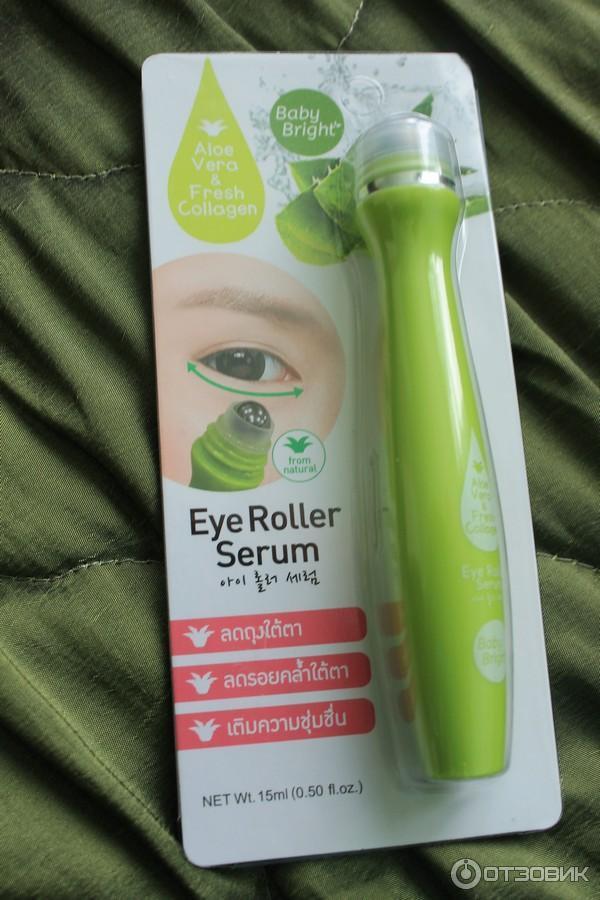
If you really want to stretch the period of breastfeeding longer - your right. The main thing is not to the detriment of your health and family well-being. But if for some reason you have to complete feeding by the year and even earlier, there is no tragedy in this. Much more dangerous is the myth itself that a woman who does not breastfeed is a bad mother! Milk is just food, and you can give affection, tenderness and love to your baby, even feeding him a formula from a bottle.
9. Teeth out of order - trouble!
Delayed eruption is often a sign of illness, but the order of appearance of milk teeth in healthy children is often violated.
In Internet articles and forums, you can often find the statement that the order of teething in infants is much more important than the timing at which the teeth appeared. Allegedly, teeth that climb contrary to the established queue are a sign of serious health problems in the baby. This is a big misconception.
This is a big misconception.
In fact, pediatricians strictly monitor the time of the appearance of teeth, since late eruption is sometimes really a sign of poor nutrition or serious illnesses of the baby, for example, rickets. But the order of appearance of milk teeth is often violated in healthy children. Moreover, in recent years, dentists have increasingly recorded such deviations, which in the future do not affect the child's condition in any way.
10. Breastfeeding protects against unwanted pregnancy
Partly it is. If a woman breastfeeds at least once every four hours with a six-hour break at night, and the baby actively sucks and is only breastfed, the process of egg maturation in the ovaries is suppressed in the mother's body, so pregnancy is impossible. However, as the frequency of feeding or milk production decreases, the chance of ovulation and the risk of an unplanned pregnancy increases. Therefore, the protective effect of lactation persists only in the first months of a baby's life, before the introduction of complementary foods, and you should not rely on it completely.
Tics in children / Children's neurology / Articles about health / Articles and encyclopedia / madez.ru
Tics, or hyperkinesis, are repeated unexpected short stereotyped movements or statements, outwardly similar to voluntary actions. A characteristic feature of tics is their involuntary nature.
- Types of ticks
- Motor tics - blinking, rolling eyes, rolling eyes, fixing gaze, raising eyebrows, furrowing eyebrows, twitching cheeks, licking, shrugging shoulders, twitching hands, snapping fingers.
There are simple and complex motor tics.
Simple tics capture one muscle group, mainly mimic muscles, rapid blinking, squinting, sniffing, stretching lips, and frowning predominate.
Complex motor tics resemble coordinated actions, the implementation of which includes several muscle groups. Complex motor tics include grimacing, jumping up and down, touching body parts, people or objects, sniffing objects, throwing the head back. Other manifestations of complex motor tics are echopraxia (imitation of other people's gestures and movements) and copropraxia (offensive gestures).
Other manifestations of complex motor tics are echopraxia (imitation of other people's gestures and movements) and copropraxia (offensive gestures).
- Vocal tics are also divided into simple and complex.
Simple vocal tics include the reproduction of individual, mostly low sounds: coughing, "clearing the throat", grunting, noisy breathing, sniffing. Less common are such high-pitched sounds as “i”, “a”, “u-u”, “uf”, “af”, “ay”, squeal and whistle.
Complex vocal tics are manifested in the pronunciation of words, phrases and sentences that have a certain meaning and include echolalia (repetition of sounds, words spoken by others), palilalia (repetition of one's own words or parts of words), coprolalia (pronunciation of aggressive, offensive or socially unacceptable words and phrases).
- Generalized tic (Tourette syndrome). It is manifested by a combination of common motor and vocal simple and complex tics.

Causes of tics
The mechanism of tics is complex, and many of the causes are not fully understood. But it is known that an important role is played by genetic, immune mechanisms, perinatal pathology (entanglement of the umbilical cord around the neck, severe neonatal jaundice, caesarean section, delivery with forceps), as well as psychosocial factors (sudden fright, school adaptation stress, "tics of the first of September" , separation from one of the parents, after a long mental overload).
Tics often occur in children with pre-existing central nervous system (CNS) disorders such as attention deficit hyperactivity disorder (ADHD), cerebrovascular disorder, and anxiety disorders including generalized anxiety disorder, specific phobias, and obsessive-compulsive disorder .
Diagnostics
Children with tics should be consulted by specialists:
- neurologist
- psychotherapist
Treatment
Treatment of tics in children is complex and is best done on an outpatient basis, as hospitalization may exacerbate tics.
1. For the correction of tics, it is recommended to eliminate provoking factors first. Of course, it is necessary to observe the sleep and nutrition regimen, the adequacy of physical activity.
2. Family psychotherapy, exclusion of traumatic situations.
3. Psychological correction (individual and group lessons).
4. Drug treatment. Medications are prescribed by a neurologist depending on the clinical picture and additional examination data.
- Tips for parents
- Do not focus on tics, pull the child, or force him to restrain hyperkinesis.
- Do not show parents your emotional reaction to the appearance of tics in a child.
- Create a positive emotional environment.
- Restrict TV viewing, computer games for 1 month.
Prognosis and prevention
The prognosis for children who have tics at the age of 6-8 years is favorable (i.e. tics disappear without a trace).